Are you alternating between scalding hot and freezing cold water while showering? Does your energy bill spike in the winter due to long, heated showers or during summer when your family takes more frequent showers? If so, it may be time to look into ways of how to regulate hot water in shower.
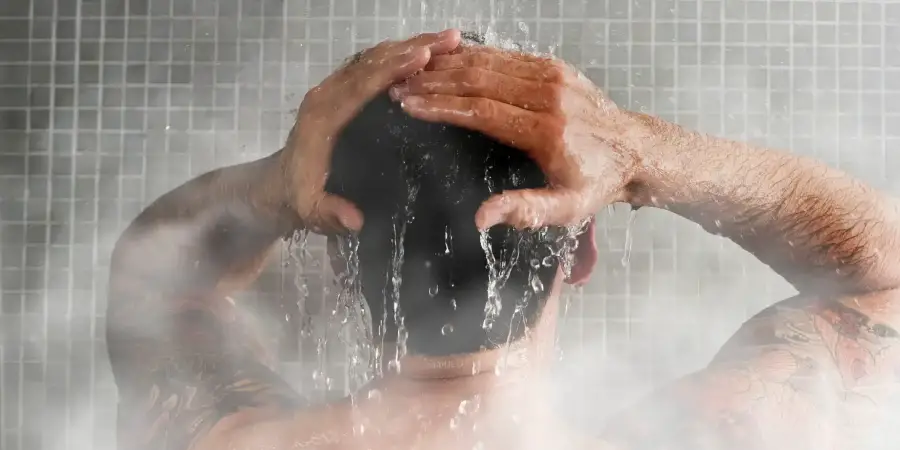
Hot water in the shower is a necessity for most people. It helps us feel refreshed and relaxed and has many health benefits, like improving blood circulation, reducing muscle tension, and promoting better sleep.
This blog post explores how proper water regulation can help improve both comfort and cost-efficiency when taking showers at home. Discover simple tips on saving energy while still enjoying warm showers that will leave you feeling refreshed day after day!
What Will You Need?
First, let’s go through the things you’ll need to get started:
- A thermometer
- Access to your water heater or boiler
- A notepad and pen for taking notes
Once these items are ready, let’s move on to the next section.
10 Easy Steps on How to Regulate Hot Water in Shower
Step 1. Identify the Current Temperature:
Start your shower and let it run for a few minutes to reach its regular temperature. Use the thermometer to measure the temperature of the water. Record this initial temperature in your notepad.
Step 2. Locate the Water Heater:
Find the location of your water heater or boiler. This could be in your basement, utility closet, or boiler room. Check the current temperature setting on the device. It is essential to compare the temperature noted down earlier from the shower water with the current setting of your water heater, noting any differences.
Step 3. Adjust the Water Heater Temperature:
If the shower water temperature significantly differs from the setting on your water heater, it’s time to make some adjustments. Most water heaters have a dial or digital panel where you can control the temperature. Gradually adjust it if the water is too hot or up if it’s too cold, and remember to note down the new setting. Wait about an hour for the water heater to adjust to the new temperature setting.
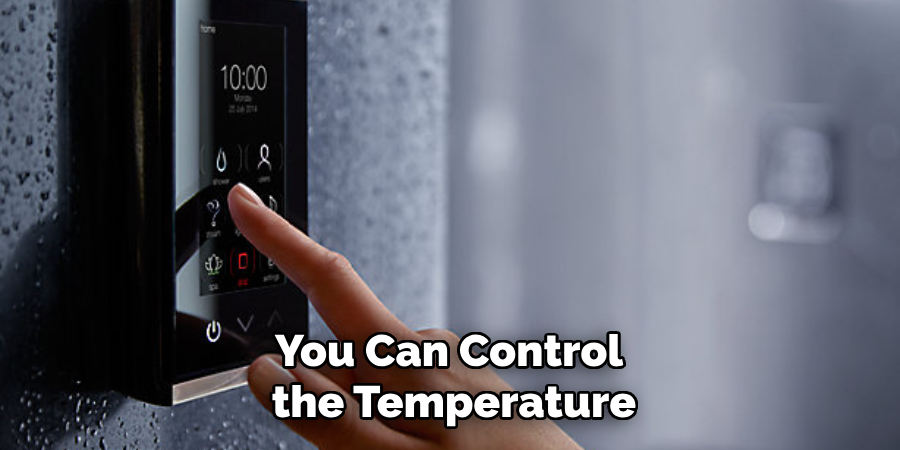
Step 4. Recheck the Shower Temperature:
After waiting for about an hour, turn on the shower again and let it run for a few minutes to reach its regular temperature. Using your thermometer, measure the temperature of the water and record it in your notepad. If the temperature of the water matches your preferred temperature, then the process is complete. However, if the water is still too hot or cold, you must adjust the water heater’s temperature again.
Step 5. Check for Sediment Build-up:
If the shower water temperature is still different from your liking, there may be sediment build-up in your water heater. This sediment can clog the pipes and cause inconsistent water temperatures. To fix this issue, you must flush out your water heater. Refer to your water heater’s user manual or seek professional help to carry out this process.
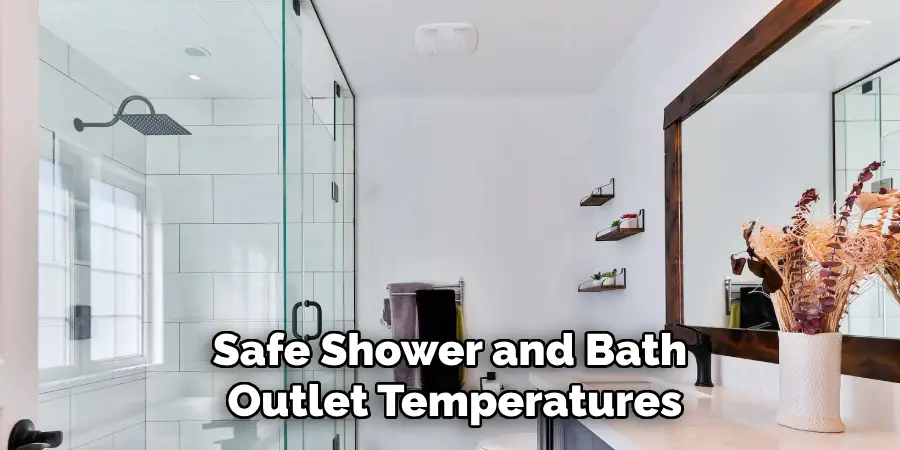
Step 6. Install a Thermostatic Mixing Valve:
If you’ve followed the above steps and are still experiencing difficulties regulating your shower’s hot water, a more technical solution might be needed. Consider installing a thermostatic mixing valve.
This device blends hot water with cold water to ensure constant, safe shower and bath outlet temperatures, preventing scalding. While this step may require a plumber’s assistance, it’s a worthwhile investment for long-term regulation of your shower’s hot water.
Step 7. Inspect for Pipe Insulation:
Check if the hot water pipes leading from your heater to your shower are adequately insulated. If not, heat loss can occur, leading to inconsistent water temperatures.
Insulated foam sleeves or wraps can be used to protect these pipes, preventing heat loss and ensuring a consistent hot water supply to your shower. Remember, the installation process may vary depending on the type of insulation used, so it’s advisable to follow the manufacturer’s instructions or hire a professional if you need more clarification.
Step 8. Evaluate the Shower Valve:
If you’re still experiencing issues with water temperature in your shower, the problem may be with the shower valve itself. The shower valve controls the flow of water to the shower head; if it’s faulty or old, it can affect the temperature of the water.
If you suspect this to be the case, you may need to replace the shower valve. This task can be complex, so it might be better to hire a professional plumber to ensure it’s done correctly.
Step 9. Maintain Regular Check-ups:
Regardless of whether you’ve achieved your ideal shower temperature, it’s essential to conduct regular check-ups of your water heater and shower settings.
This includes monitoring the temperature settings, checking for sediments, and ensuring the shower valve and thermostatic mixing valve (if installed) are functioning correctly. Regular maintenance will not only help maintain the desired shower temperature, but it will also ensure the longevity of your water heater and plumbing fixtures.
Step 10. Consult a Professional:
If you have followed all the steps outlined and are still experiencing difficulties regulating hot water in your shower, it might be time to consult a professional. Plumbers have the knowledge and tools necessary to diagnose and fix any underlying issues causing the inconsistent water temperature. Remember, seeking professional help when dealing with plumbing issues is always advisable to avoid risking further damage or potential injuries.
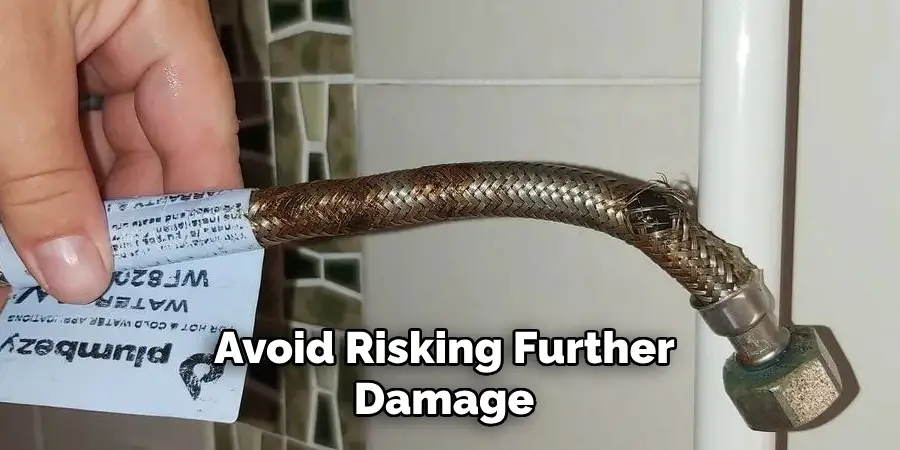
By following these ten easy steps, you can successfully regulate the hot water in your shower and enjoy a comfortable and refreshing experience every time. Remember always to take safety precautions when dealing with hot water and seek professional help if needed.
5 Additional Tips and Tricks
- Install a Temperature-regulating Showerhead: If you constantly adjust the hot and cold knobs to get the perfect water temperature, consider investing in a temperature-regulating showerhead. These showerheads have built-in thermostats that maintain a consistent water temperature, making it easier to regulate the hot water without extra effort.
- Use an Anti-scald Valve: Another way to regulate hot water in your shower is by installing an anti-scald valve. This device monitors the water temperature and automatically cuts off the flow if it gets too hot, preventing accidental burns.
- Adjust the Overall Household Water Heater Temperature: If your shower’s hot water seems uncontrollable, regardless of how much you adjust the knobs, it might be worth checking your water heater’s temperature setting. Lowering the temperature here can affect the hot water in all faucets, including your shower.
- Consider Time-of-day Usage: If you live in a shared household or apartment building, it’s possible that everyone is using hot water simultaneously, causing temperature fluctuations. Try to schedule your showers during off-peak hours when there is less demand for hot water.
- Try a Flow Restrictor: If you’re looking to save on your energy bill and regulate the hot water in your shower, consider installing a shower timer or flow restrictor. These devices limit the time and water used, giving you more control over the temperature and reducing energy usage.
Remember, finding the perfect water temperature in your shower may take trial and error. Be patient, and don’t be afraid to try different methods until you find the one that works best for you. 5
5 Things You Should Avoid
- Don’t Rely Solely on Your Feelings: The water may feel warm on your hand but can still burn more sensitive parts of your body. Always test the water with a bath thermometer before bathing children or elderly people.
- Avoid Using Hot Water Immediately: Don’t start with hot water; start with cold water and slowly add hot water until the temperature is comfortable.
- Don’t Ignore Signs of Malfunction: If your water temperature fluctuates wildly or changes suddenly, this might indicate an issue with your water heater or plumbing system. Don’t ignore this; call a professional to check it out.
- Avoid Showering During Water Heater Recovery Times: Most water heaters need a recovery period after heavy usage, during which the water might be less hot. Avoid showering immediately after someone else to ensure your water heater has had time to recover.
- Never Override Safety Features: Many water heaters have built-in safety features designed to prevent scalding. Always respect these features and never attempt to override them for a hotter shower. It can lead to severe injuries.
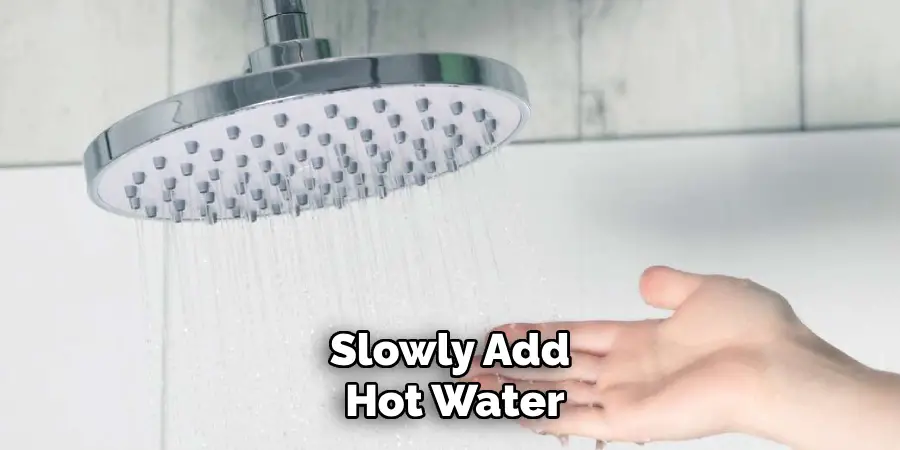
By avoiding these common mistakes and using the tips and tricks provided, you can easily regulate the hot water in your shower and enjoy a comfortable and safe bathing experience.
Conclusion
With all this being said on how to regulate hot water in shower, it’s time to take action now and start regulating your shower’s hot water. You’ll immediately experience the positive environmental effects, but you’ll also get the satisfaction of knowing that you can still have a comfortable, warm shower – without any worries about wasting resources unconsciously.
Experiment with different settings on your shower and see what combination fits you best. After some trial and error, you’ll soon be enjoying that perfect temperature! No more hot water headaches, just cozy showers with a minimal environmental footprint.
So what are you waiting for? Take control of your hot water today and optimize it to save energy without compromising your comfort.

